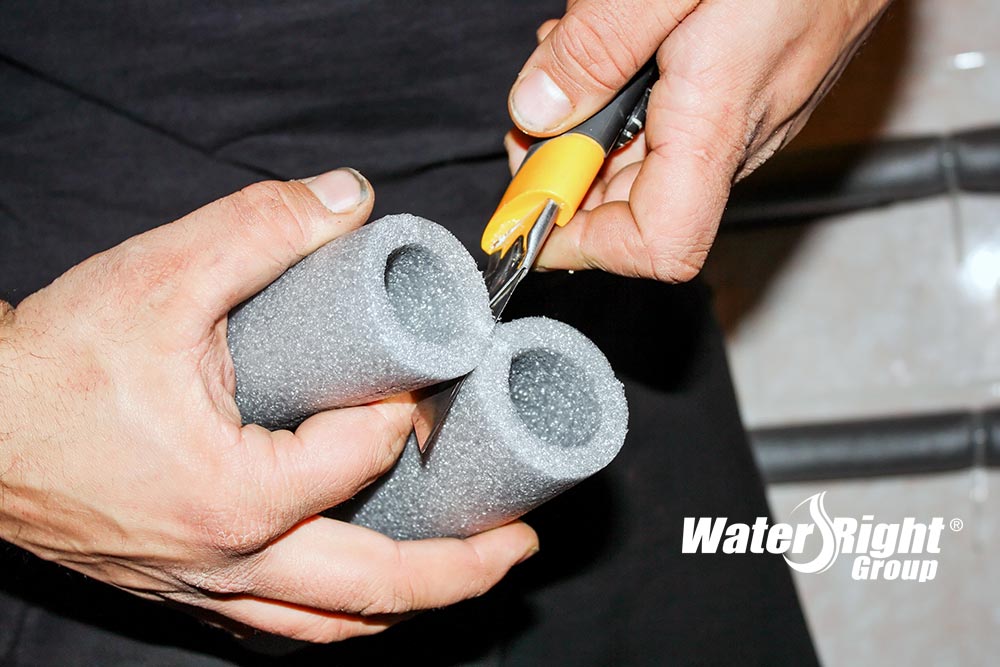
Winterizing Your Water Softener – What You Need to Know
Do you need to winterize your water softener or filter? And if so, what does winterization involve? That depends on the situation…
If you keep your water softener or filter in the basement of an occupied home, you shouldn’t have to worry about winterization. You will want to winterize your system if you have any of the following:
- A unit installed in an unheated garage
- A vacation home you’re not using in the winter
- You leave your home for an extended winter vacation
In all of these situations, it is smart to take precautions that ensure your water softener will be protected in below freezing temperatures. Frozen pipes could lead to pipes that burst, which could cause significant damage to your property as well as your water treatment equipment.
Let’s take a look at some helpful advice.
Insulation and Extra Heating
For people who plan to continue using their water softener during the winter, there are a few simple things you can do to make sure it doesn’t freeze in cold weather.
If you live in a milder climate, where the weather doesn’t get extremely cold, insulating your pipes and tanks should be enough to protect your system during the winter. You can purchase pipe insulation wrap at any home improvement store. Heat tape or electric pipe heating cables for the water lines are also a good idea.
When it comes to water softener tanks, some homeowners have an insulated box built around the system. You can also purchase plumbing insulation in sheets, or wrap an insulation blanket around them. There are even special jackets designed specifically for water softener tanks.
Because of the salt saturation, your brine tank is only likely to freeze in very cold climates where temperatures can drop below zero.
If you are using your water softener year round, the most important thing is to keep it warm enough to prevent freezing, which is why a space heater in your garage can help.
Remember, you only need to keep the temperature above 32 degrees Fahrenheit, and you should always take safety precautions as per the manufacture when using a space heater. Only turn it on when you know it is necessary.
Running water will also prevent freezing. If you’re only going to be away for a few days, you could leave a faucet running at a slow trickle to keep things moving in those pipes while you’re gone. Although not a cure-all, this will at times, prevent full-on freezing and bursting from freezing pipes.
Draining and Disconnecting a Water Softener
If you do not plan on using your water softener during the winter, and the heat in your residence will be turned off during that time, there are specific steps you should follow to disconnect, drain, and store your system.
It is recommended that you drain the tanks. This ensures there won’t be any water left in the system that could freeze and cause damage. You’ll need to put the softener into its regeneration cycle and wait until you notice the system backwashing water into the drain.
At this point, if your water softener has a manual bypass valve, it should be put into the bypass position to turn off the supply of water to the water softener. This will isolate and protect your system from the rest of the building’s supply of water during this time.
Remove the unit from the bypass valve and proceed to remove the valve from the tank. Once the riser tube is exposed, use plastic 3/8” – 1/2” plastic-tubing long enough to each the bottom of the riser tube and lower distributor. Siphoning the water from the media tank is recommended at this point.
The slower process of siphoning will ensure that all the water is removed from the tank. After water has stopped flowing from the siphon tubing, allow the tank to sit for 5 to 10 minutes. This additional time allows for all the water to completely settle to the bottom of media tank. At that time you can attempt to siphon the balance of water which has settled out.
The majority of standing water should be scooped out of the brine tank, but the solution that’s left should not freeze because of the high salt content.
Consult your user’s manual for detailed instructions on how to completely drain your tanks, or call a water treatment professional for help.
Next, unplug the water softener or turn off the switch to the power source.
You should be able to leave the brine tank in the cold, but you may want to completely remove and store your softener tank in a warmer area.
Still Have Questions? Find a Water-Right Expert!
If you’d rather not worry about taking on a project like this, you may be able to get help from the dealer who sold you your water treatment equipment, or you can call a plumber to do the job for you.
Whether you need assistance with winterization, or you need your water softener hooked back up in the springtime, contact one of our experts in your area for advice and service you can rely on!

